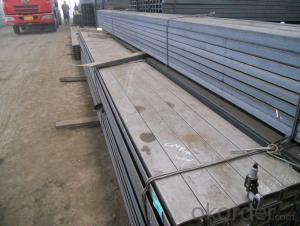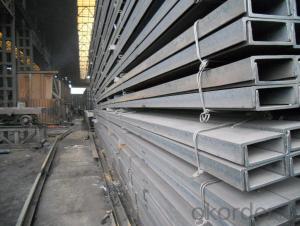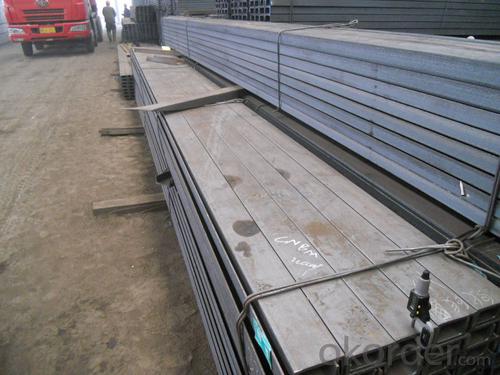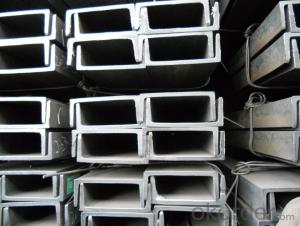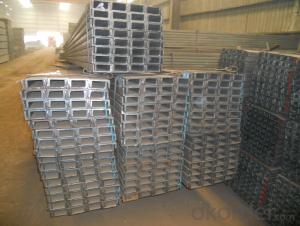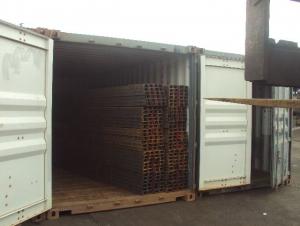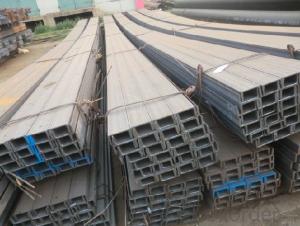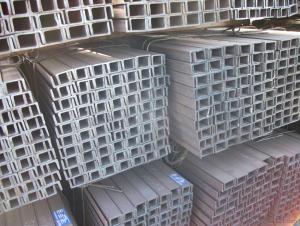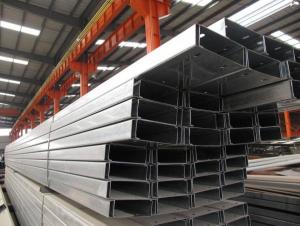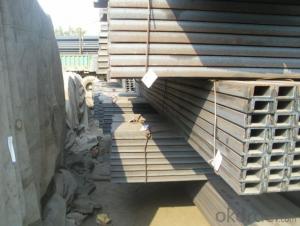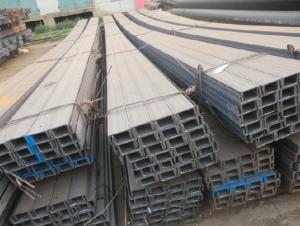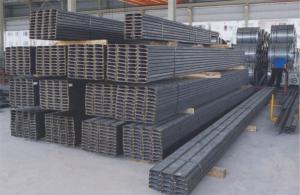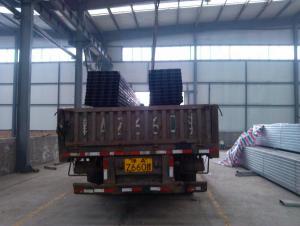Hot Rolled U-channel Carbon Steel JIS Standard Many Sizes
- Loading Port:
- Tianjin
- Payment Terms:
- TT or LC
- Min Order Qty:
- 25 m.t.
- Supply Capability:
- 1000 m.t./month
OKorder Service Pledge
OKorder Financial Service
You Might Also Like
Product Description:
OKorder is offering U-channel at great prices with worldwide shipping. Our supplier is a world-class manufacturer of steel, with our products utilized the world over. OKorder annually supplies products to European, North American and Asian markets. We provide quotations within 24 hours of receiving an inquiry and guarantee competitive prices.
Product Applications:
1.The JIS channel can be devided into two kinds, namely common channel steel and light channel steel. The sizes of hot rolled common channel steel range from 5# to 40#. Meanwhile, the channel steel can be divided into cold forming sectional equal channel steel, cold forming sectional unequal channel steel, cold forming inner edge channel steel and outer edge channel steel.
2.The JIS channel is usually used for arch-itechtural structure, and they could be welded in order to support or hang a vari-ety of facilities. They are also usually used in combination with I beam. The channel steel with sizes under 14# is usually applied to construction engineering, as purline, while the channel steel with sizes above 16# is more likely to be used in building vehicle chassis structure and mechanical structure. Furthermore, the channel steel in sizes above 30# are target at building bridge structure, as tension bar.
Product Advantages:
OKorder's U-channel are durable, strong, and resist corrosion.
Main Product Features:
· Premium quality
· Prompt delivery & seaworthy packing (30 days after receiving deposit)
· Corrosion resistance
· Can be recycled and reused
· Mill test certification
· Professional Service
· Competitive pricing
Product Specifications:
1. We are definitely speciallizing in manufacturing and supplying channel steel as per japanese standard, which is characterised with high mechanical strength and competitive prices.
2. The sections in details are as followings in the table-1
JIS CHANNEL | Standard h | Sectional b | Dimension s | t | Mass: Kg/m |
(mm) | (mm) | (mm) | (mm) | ||
50x25 | 50 | 25 | 3.0 | 6.00 | 2.37 |
75X40 | 75 | 40 | 3.8 | 7.00 | 5.30 |
75X40 | 75 | 40 | 4.0 | 7.00 | 5.60 |
75X40 | 75 | 40 | 4.5 | 7.00 | 5.85 |
75X40 | 75 | 40 | 5.0 | 7.00 | 6.92 |
100X50 | 100 | 50 | 3.8 | 6.00 | 7.30 |
100X50 | 100 | 50 | 4.2 | 6.00 | 8.03 |
100X50 | 100 | 50 | 4.5 | 7.50 | 8.97 |
100X50 | 100 | 50 | 5.0 | 7.50 | 9.36 |
125X65 | 125 | 65 | 5.2 | 6.80 | 11.66 |
125X65 | 125 | 65 | 5.3 | 6.80 | 12.17 |
125X65 | 125 | 65 | 5.5 | 8.00 | 12.91 |
125X65 | 125 | 65 | 6.0 | 8.00 | 13.40 |
150x75 | 150 | 75 | 5.5 | 7.30 | 14.66 |
150x75 | 150 | 75 | 5.7 | 10.00 | 16.71 |
150x75 | 150 | 75 | 6.0 | 10.00 | 17.90 |
150x75 | 150 | 75 | 6.5 | 10.00 | 18.60 |
150x75 | 150 | 75 | 6.5 | 10.00 | 24.00 |
200X80 | 200 | 80 | 7.5 | 11.00 | 24.60 |
Note of U-channel
1. According to national standard (GB) for our products, if not, supply according to national standards (GB) or agreement.
2. We can not only provide electric furnace +LF+VD and electros lag re-melting (ESR) steel forging materials, but also forging products of piece, bar, etc.
3. Our company is equipped with roll equipment and can provide our customers with roll billets or finished.
4. The materials that we purchase are all accord with International General Standard; you could check it out on the Material Quality Sheet.
5. We are the creator of the “seven-step inspect method” in China.
6. The technical workers we employed are the ones with many years’ working experience, who know the technology procedures very well.
7. We will strictly inspect our production that we sold according to the customer’s request.
8. Our steel reaches international quality standards. Besides, our company is equipped with large-sized vertical saw machines, horizontal saw machines, milling machines, grinding machines and other advanced equipment. All our products are carried out hardness tests, such as the ultrasonic flaw detection before shipment. Therefore, there is no quality problem. With more competitive price than other suppliers, our steel has good sales in the markets of North America, South America, East Europe, Southeast Asia, Africa, Oceania, the Middle East, East Asia and West Europe.
FAQ:
Q1: Why buy Materials & Equipment from OKorder.com?
A1: All products offered byOKorder.com are carefully selected from China's most reliable manufacturing enterprises. Through its ISO certifications, OKorder.com adheres to the highest standards and a commitment to supply chain safety and customer satisfaction.
Q2: How do we guarantee the quality of our products?
A2: We have established an advanced quality management system which conducts strict quality tests at every step, from raw materials to the final product. At the same time, we provide extensive follow-up service assurances as required.
Q3: How soon can we receive the product after purchase?
A3: Within three days of placing an order, we will begin production. The specific shipping date is dependent upon international and government factors, but is typically 7 to 10 workdays.
Images:
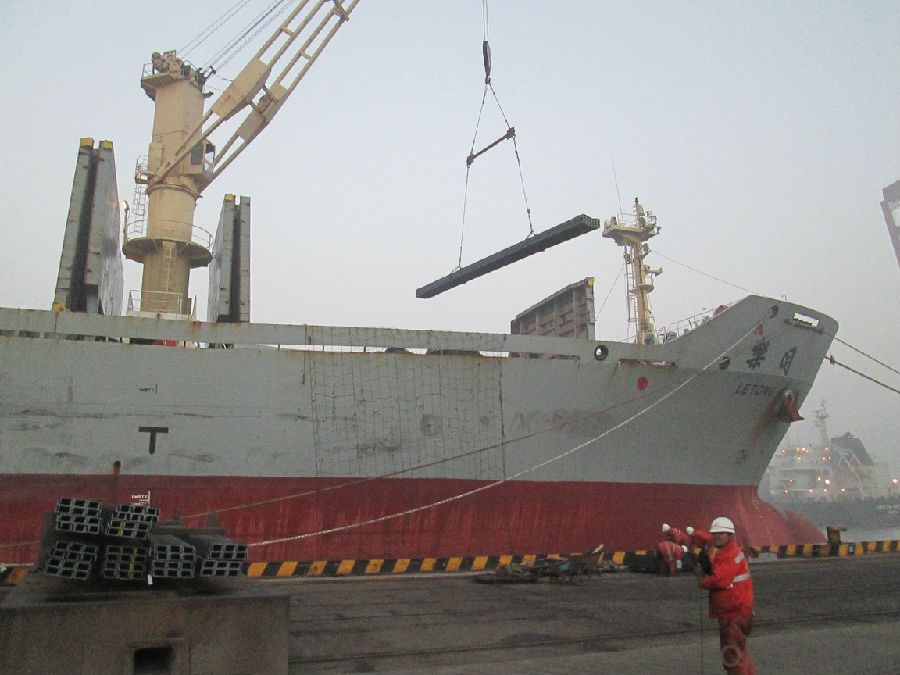
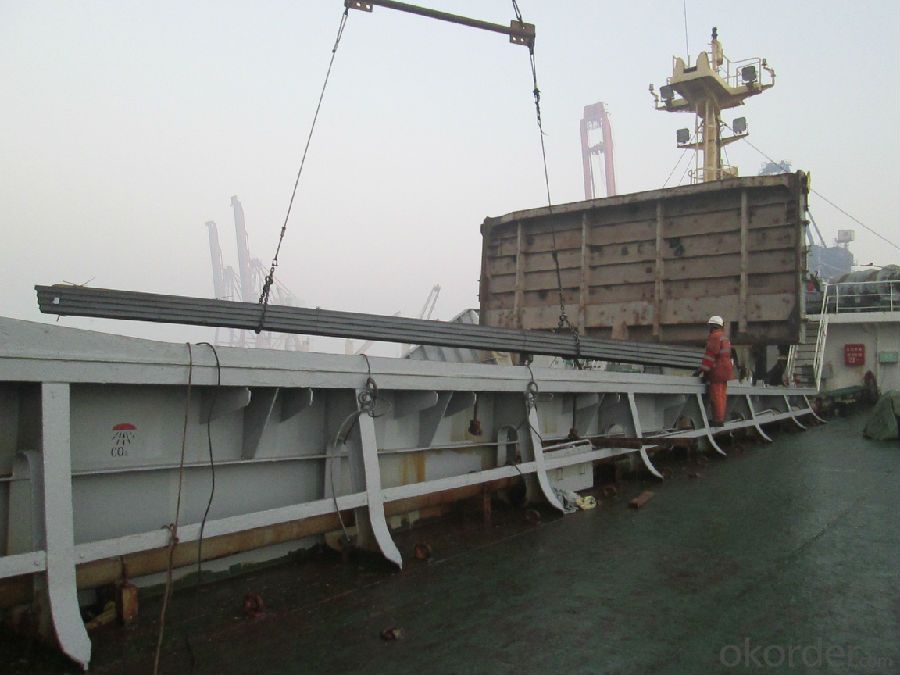
- Q: Why did the channel steel start from the 4 floor?
- Through the comparison of economy and technology, a reasonable starting position is obtained.The bottom construction, not early pick, and pick too late, the following shelf is relatively high, uneconomical. Compare the two.In other ways, you can tell that the four floor is better. It's settled.
- Q: Can steel channels be used for machinery framing?
- Yes, steel channels can be used for machinery framing. Steel channels are commonly used in construction and manufacturing industries due to their strength and durability. They provide a strong and rigid framework that can support heavy machinery and equipment. Steel channels offer excellent structural support, making them ideal for machinery framing applications. Additionally, steel channels can be easily customized and fabricated to meet specific design requirements, ensuring a precise fit and optimal performance for machinery framing projects.
- Q: What does "14 channel steel" do in the template "[14"?
- Specification for dimensions and weight of hot rolled ordinary channel steel14#a height (H) 140, leg width (b) 58, waist thickness (d) 6, theoretical weight 14.535 kg14#b height (H) 140, leg width (b) 60, waist thickness (d) 8, theoretical weight 16.733 kg
- Q: What are the common surface treatments for steel channels?
- Steel channels can be treated with various surface treatments to protect them from corrosion and enhance their appearance. Some common options include: 1. Galvanizing: A layer of zinc is applied to the steel channel, providing excellent durability and protection against harsh environmental conditions. 2. Powder coating: Dry powder is applied to the steel channel, which is then heated and cured to create a durable and attractive finish. This treatment offers resistance to chipping, scratching, and fading. 3. Painting: A layer of paint is applied to the surface of the steel channel to improve its appearance and protect it from corrosion. Different types of paints, such as epoxy, acrylic, or enamel, can be used for varying levels of durability and aesthetics. 4. Anodizing: Although primarily used for aluminum, anodizing can also be applied to steel channels. This process creates a protective oxide layer on the metal's surface, increasing its resistance to corrosion, abrasion, and wear. 5. Black oxide coating: A chemical process is used to create a black finish on the steel channel, enhancing its aesthetic appeal and providing some corrosion resistance. This treatment is often used for decorative purposes and to reduce light reflection. 6. Passivation: Stainless steel channels can undergo passivation, a chemical process that removes impurities from the surface, improving their corrosion resistance. This treatment eliminates free iron and other contaminants, preventing rust and increasing the steel's longevity. When choosing a surface treatment for steel channels, it is important to consider the specific requirements of the application and seek advice from professionals to determine the most suitable option.
- Q: What are the factors to consider when determining the appropriate length of a steel channel?
- When determining the appropriate length of a steel channel, several factors need to be considered. These factors include the intended use of the channel, the structural requirements, and the limitations imposed by manufacturing and transportation processes. Firstly, the intended use of the steel channel plays a crucial role in determining its length. The channel's purpose, whether it is for supporting beams, framing structures, or acting as a conduit, will dictate the appropriate length. It is essential to assess the specific requirements of the project and ensure that the channel's length aligns with the overall design plan. Secondly, the structural requirements of the application must be taken into account. Factors such as load-bearing capacity, deflection limits, and the need for additional support or reinforcement can influence the appropriate length of the steel channel. Engineering calculations and structural analysis should be conducted to determine the necessary dimensions and ensure the channel can withstand the anticipated forces and stresses. Furthermore, manufacturing and transportation processes have their limitations that should be considered. Steel channels are typically manufactured in standard lengths, and it is important to select a length that minimizes material waste and cost. Transportation logistics, such as the size of the delivery vehicle or the availability of suitable transportation methods, may also impact the maximum length feasible for a project. Other factors that should be considered include the installation process, fabrication requirements, and any potential future modifications. It is crucial to evaluate these aspects to ensure that the chosen length of the steel channel is practical, cost-effective, and aligns with the overall project objectives. In conclusion, determining the appropriate length of a steel channel requires considering the intended use, structural requirements, manufacturing and transportation limitations, installation process, fabrication requirements, and potential future modifications. By carefully assessing these factors, one can select a length that meets the project's needs while ensuring structural integrity and efficiency.
- Q: Can steel channels be used for supporting mezzanine floors?
- Yes, steel channels can be used for supporting mezzanine floors. Steel channels are often used in construction for their strength and durability. They provide excellent support for mezzanine floors due to their ability to carry heavy loads and resist bending or twisting. Steel channels are commonly used in conjunction with other structural components, such as beams and columns, to create a sturdy framework for mezzanine floors. The use of steel channels ensures that the mezzanine floors can safely support additional weight, such as storage racks, equipment, or personnel, without compromising structural integrity.
- Q: Can steel channels be galvanized?
- Yes, steel channels can be galvanized. Galvanizing involves coating steel with a layer of zinc to protect it from corrosion and increase its longevity.
- Q: How do steel channels contribute to the stability of roofing structures?
- Steel channels contribute to the stability of roofing structures by providing support and reinforcement. They are often used as purlins or joists to distribute the weight of the roof evenly, preventing sagging or collapse. The strength and durability of steel channels help withstand the forces of wind, snow, and other external factors, ensuring the overall stability and longevity of the roofing system.
- Q: What are the design considerations when using steel channels?
- When using steel channels, there are several design considerations to take into account. Firstly, it is important to consider the load-bearing capacity of the channels, ensuring they can adequately support the intended weight and forces. Additionally, the dimensions and shape of the channels should be carefully chosen to align with the structural requirements and desired aesthetic. The material properties of steel, such as its strength, durability, and resistance to corrosion, should also be considered to ensure long-term performance. Lastly, factors like fabrication and installation methods, as well as cost considerations, should be taken into account during the design process.
- Q: What are the typical tolerances for steel channels?
- Steel channels can have varying tolerances depending on their specific application and industry requirements. Industry standards and specifications generally define the common tolerances for steel channels. Regarding dimensional tolerances, the width, depth, and thickness of steel channels typically fall within a range of ±0.005 to ±0.030 inches. These tolerances ensure that the steel channels meet the desired dimensions accurately, enabling them to be assembled or integrated into various structures or systems. For straightness, steel channels usually have a tolerance of 1/8 to 1/4 inch over a specified length. This ensures that the channels can be easily aligned and installed without significant deviations. Surface finish tolerances are also crucial for steel channels as they affect both appearance and functionality. Roughness measurements like Ra (average roughness) or Rz (mean roughness depth) define the typical tolerances for surface finish. Depending on the specific application requirements, these tolerances can range from 20 to 125 microinches for Ra and 100 to 600 microinches for Rz. It is essential to note that these tolerances serve as general guidelines, and the actual tolerances may differ based on the manufacturing process, industry standards, and customer specifications. Therefore, it is advisable to consult the relevant standards or communicate with the steel channel manufacturer to determine the specific tolerances required for a particular application.
Send your message to us
Hot Rolled U-channel Carbon Steel JIS Standard Many Sizes
- Loading Port:
- Tianjin
- Payment Terms:
- TT or LC
- Min Order Qty:
- 25 m.t.
- Supply Capability:
- 1000 m.t./month
OKorder Service Pledge
OKorder Financial Service
Similar products
Hot products
Hot Searches
Related keywords
